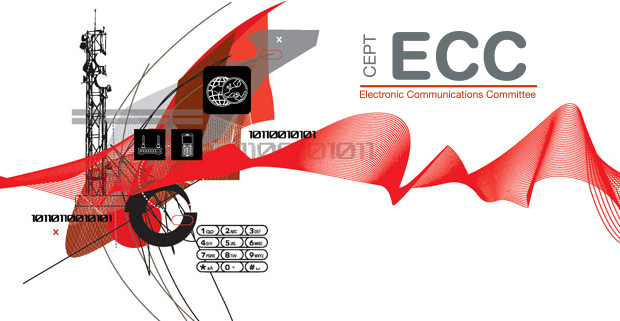ECC steps up its aims to harmonise 5G in millimetre wave bands
Peter Faris, ECO Spectrum Expert, explores recent developments from the Electronic Communications Committee regarding harmonisation for 5G in millimetre wave frequency bands at 40.5-43.5 GHz and 66-71 GHz
Harmonisation: a recent history
As explored in previous newsletters, in recent years the Electronic Communications Committee (ECC) has developed harmonisation measures for 5G in several frequency bands.
These include the “pioneer bands” of 3.4-3.8 GHz and 24.25-27.5 GHz, as well as existing mobile bands below 3 GHz. Such initiatives have enabled the successful initial rollout of 5G networks across the CEPT region.
In order to meet further demand for high capacity deployments requiring large contiguous blocks of spectrum, particularly in urban areas, the ECC has continued work to harmonise additional “millimetre wave” bands. “Millimetre wave” broadly refer to spectrum above 24 GHz, where wavelengths are of the order of ~10 mm and below.
The properties of the high frequencies in the millimetre wave range mean that signals can only propagate over short distances – in the order of tens of metres. This provides opportunities for delivery of high capacity connectivity for urban hotspots while ensuring sharing with other users. This opportunity for sharing has been recognised as an area of focus within the CEPT Roadmap for 5G and beyond.
At the 2019 World Radiocommunication Conference (WRC-19), it was agreed to identify the bands 24.25-27.5 GHz, 40.5-43.5 GHz and 66-71 GHz for International Mobile Telecommunications. The 24.25-27.5 GHz band had already been harmonised by CEPT in 2018. In early 2020, the EC issued a mandate to CEPT to develop relevant harmonisation conditions for the 40.5-43.5 GHz and 66-71 GHz bands.
Reviewing regulations for 66-71 GHz
The 66-71 GHz band had already been harmonised within the ECC and EC framework for short range devices – in 2019. In particular, wideband data transmission systems, more commonly known as “WiGig”, were harmonised through existing technical conditions in ERC Recommendation 70-03 and the EC Decision for SRD (EU) 2019/1345.
CEPT Report 78, published in April 2021, concluded that these existing regulations were suitable for provision of 5G systems. This was under the assumption that 5G would operate under the current general authorisation framework and would implement appropriate technical conditions to coexist with other usage in the band.
This was also in line with the conclusions from WRC-19 that recognised the need for equitable access for existing technologies, taking into account the sharing opportunities in this frequency range. It meant that short range urban 5G deployments could be deployed without a significant risk of interference to WiGig systems operating in the same band.
How 40.5-43.5 GHz can coexist with other systems
Development of harmonisation conditions for the 40.5-43.5 GHz band proved a more complicated task. There were two main reasons for this. Firstly, there were no existing regulations for terrestrial systems in this band. Secondly, there was a need to ensure coexistence with other systems, including fixed-satellite service (FSS) systems operating both within the band and in the adjacent band below 40.5 GHz, as well as fixed service (FS) and radio astronomy service (RAS) within the band. These issues required additional studies.
ECC PT1 commenced work on this activity in mid-2020. Due to the need for complex technical studies and discussions, coupled with the backdrop of the challenges of remote working during the early stages of the COVID-19 pandemic, it became clear it would not be possible to conclude the work in time for the original deadline set out in the EC Mandate of July 2021. The EC agreed to an extension of the timeline due to the exceptional circumstances. ECC PT1 continued its discussions while working remotely during 2020 and 2021, and was able to conclude the work during 2022 with the resumption of physical attendance at meetings.
The work on this band was finalised at the recent 60th ECC plenary meeting in November with the approval of four separate deliverables – CEPT Report 82, ECC Decision (22)06, ECC Recommendation (22)01 and ECC Recommendation 22(02).
CEPT Report 82 identifies harmonised technical conditions for mobile systems in the 42 GHz band and addresses sharing and compatibility conditions to ensure protection of other users of spectrum in the 40.5-43.5 GHz frequency band (FS, RAS and FSS) and in adjacent bands (FSS, FS). ECC Decision (22)06 contains harmonised technical conditions aligned with CEPT Report 82.
The technical conditions are complemented by the ECC Recommendations which set out guidance to administrations on ensuring coexistence with satellite systems both within the band and in the adjacent band.
ECC Recommendation 22(01) addresses the in-band case of coexistence with receiving FSS earth stations in 40.5-42.5 GHz, as well as transmitting FSS earth stations in 42.5-53.5 GHz, while also ensuring the possibility for future deployment of these earth stations.
ECC Recommendation 22(02) addresses the adjacent band case of coexistence with receiving FSS earth stations in 39.5-40.5 GHz, including guidance on prevention and resolution of possible interference issues.
5G and beyond
The finalisation of these deliverables represents an important milestone in facilitating the availability of spectrum in millimetre wave bands in CEPT countries, in order to enable the provision of high capacity 5G urban hotspots, while ensuring the protection of existing services. This also concludes one of the key objectives of the CEPT Roadmaps for 5G and beyond.



